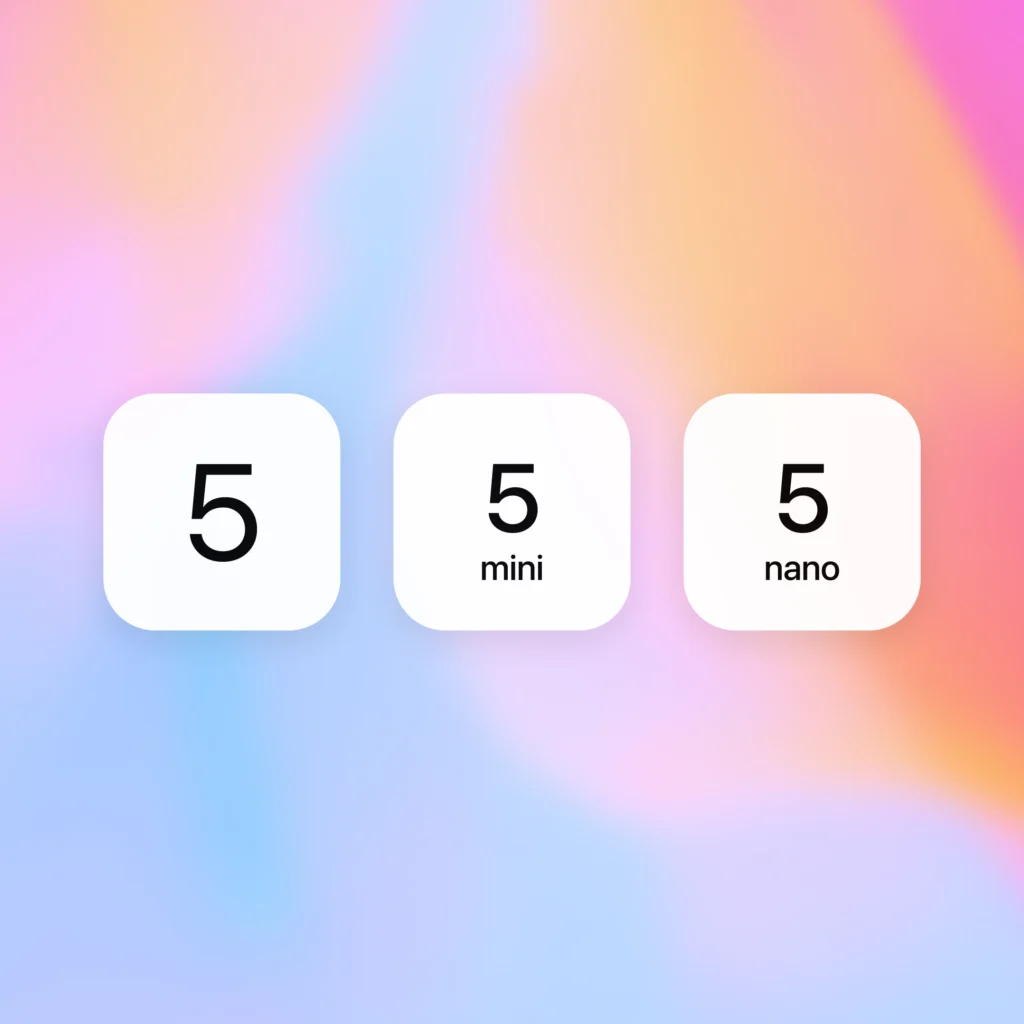OpenAI marks the launch of GPT-5, a significant milestone in artificial intelligence development. Hosted by key figures like Sam Altman, Mark Chen, and others, the event showcases GPT-5’s capabilities, its advancements over previous models, and its potential to transform how we work, learn, and create. Below are the key takeaways from the video, presented in a warm, engaging tone that reflects the excitement and promise of this groundbreaking technology.
1. GPT-5: A Leap Toward Artificial General Intelligence (AGI)
Sam Altman opens the presentation with a nod to ChatGPT’s meteoric rise, noting that 700 million people use it weekly for tasks ranging from work to creative projects. GPT-5, however, is described as a “major upgrade” over GPT-4, bringing OpenAI closer to its goal of achieving AGI. Unlike its predecessors, which Altman likens to a high school student (GPT-3) or a college student (GPT-4), GPT-5 is compared to a PhD-level expert. It’s not just smarter—it’s intuitive, fast, and capable of providing expert-level assistance across virtually any domain. This leap in capability makes GPT-5 feel like a trusted partner, ready to help with complex tasks or creative endeavors on demand.
What’s particularly exciting is the idea that GPT-5 isn’t just for answering questions—it can do things. Whether it’s writing a computer program from scratch, planning a party, or helping navigate healthcare decisions, GPT-5 acts like a team of experts in your pocket. This versatility positions it as a game-changer for individuals and businesses alike, offering what Altman calls an “incredible superpower” that was unimaginable just a few years ago.
2. Enhanced Reasoning and Reliability
Mark Chen, OpenAI’s Chief Research Officer, emphasizes that GPT-5 is built around a “reasoning paradigm.” Unlike earlier models, where users had to choose between fast responses or slower, more thoughtful ones, GPT-5 strikes a balance. It automatically adjusts its thinking time to deliver precise, accurate answers, eliminating the trade-off between speed and depth. This makes it feel seamless, almost like chatting with a brilliant friend who knows exactly when to dive deep or keep things quick.
The model’s reliability is a standout feature. Previous language models often struggled with hallucinations—factual errors that undermined trust. GPT-5 tackles this head-on, with a focus on improving factuality, especially for complex or open-ended questions. New evaluation metrics developed by OpenAI show that GPT-5 is the most reliable and accurate model they’ve ever built, particularly in high-stakes areas like healthcare, where precision is critical.
3. Unparalleled Performance Across Domains
Max Schwarzer, from OpenAI’s post-training team, highlights GPT-5’s stellar performance on academic benchmarks. In coding, it sets a new standard on SWE-Bench, which tests real-world software engineering tasks, and Aider Polyglot, which measures proficiency across multiple programming languages. Beyond coding, GPT-5 excels in multimodal reasoning, outperforming most human experts on the MMU benchmark for visual reasoning. It also shines in mathematical reasoning, scoring exceptionally well on the AIME 2025 exam, a challenging test for high school students aiming for the International Mathematical Olympiad.
These benchmarks aren’t just numbers—they signal GPT-5’s ability to handle real-world challenges with expert-level competence. Whether you’re debugging code, analyzing data, or tackling a physics problem, GPT-5 delivers results that feel polished and professional.
4. Making Learning and Creativity Accessible
One of the most heartwarming aspects of the presentation is the emphasis on making complex concepts approachable. Elaine Ya Le demonstrates this with a demo on the Bernoulli effect, a middle-school physics topic. GPT-5 not only explains the concept clearly but also creates an interactive SVG visualization in minutes, complete with adjustable parameters to show how airspeed and pressure affect lift. This ability to bring abstract ideas to life makes learning engaging and fun, whether you’re a student or an adult brushing up on a topic.
The demo underscores GPT-5’s potential as an educational tool. It can generate dynamic, interactive content for subjects like math, physics, or biology, making it easier for anyone to grasp challenging ideas. This accessibility could transform classrooms, homeschooling, or even casual learning at home, turning curiosity into understanding with ease.
5. Revolutionizing Coding and Software Development
Yan Dubois and Michael Truel, CEO of Cursor, showcase GPT-5’s coding prowess, which is described as the best coding model on the market. In one demo, GPT-5 builds a web app to help Yan’s partner learn French, complete with flashcards, quizzes, and a gamified “mouse and cheese” feature inspired by the classic Snake game. The app, created in minutes, is not only functional but beautifully designed, with progress tracking and a romantic “Midnight in Paris” theme.
Another demo highlights GPT-5’s ability to tackle real-world coding challenges. Truel shares how Cursor used GPT-5 to analyze their codebase, identifying non-obvious architectural decisions in seconds—work that took humans weeks. The model’s ability to understand code, fix bugs, and even write modular, well-documented code makes it a powerful tool for developers. It can iterate on its own work, streaming errors and refining code in a self-improvement loop, which feels like a glimpse into the future of software development.
6. Empowering Businesses and Governments
Olivier Godement, who leads OpenAI’s platform, discusses GPT-5’s impact on enterprises. Companies like Amgen (life sciences), BBVA (finance), and Oscar (healthcare) have already tested GPT-5, with impressive results. Amgen found it excels at analyzing complex scientific data, BBVA reported unmatched accuracy and speed in financial analysis, and Oscar praised its clinical reasoning capabilities. These examples show how GPT-5 can streamline processes that once took weeks, delivering results in hours.
Governments are also set to benefit, with an announcement that two million U.S. federal employees will use GPT-5 to enhance public services. The potential for widespread adoption across industries like healthcare, education, and finance suggests that GPT-5 could drive transformative change, enabling organizations to work smarter and faster.
7. Accessibility and Availability
Rennie Song shares exciting news about GPT-5’s rollout. For the first time, OpenAI’s most advanced model is available to free-tier users, with higher usage limits for Plus, Pro, Team, Enterprise, and Education subscribers. Free users will transition to GPT-5 Mini—a smaller but highly capable model—once they hit their limit. Pro users get unlimited access to GPT-5 and an extended “thinking” mode for deeper responses. The API, available starting today, includes GPT-5, GPT-5 Mini, and GPT-5 Nano, with pricing starting at $1.25 per million input tokens for GPT-5 and even lower for Nano.
This commitment to accessibility ensures that GPT-5’s power isn’t limited to elite users. Whether you’re a student, a small business owner, or a developer, you can tap into its capabilities, making it a truly democratized tool.
8. A Vision for the Future
Jakob Pachocki, OpenAI’s Chief Scientist, closes the presentation with a reflection on the broader implications of GPT-5. He describes it as an “early glimpse” of deep learning’s potential, emphasizing that the technology is still evolving. OpenAI’s mission is to understand and steer AI to be safe and useful, and GPT-5 represents years of research into making that vision a reality. Pachocki’s passion for the work shines through, as he thanks the team and expresses excitement for how GPT-5 will unlock new knowledge and transform lives.
Final Thoughts
The launch of GPT-5 feels like a moment of arrival and a promise of what’s to come. It’s not just a smarter AI—it’s a tool that empowers people to learn, create, and solve problems in ways that feel almost magical. From helping a middle schooler understand physics to enabling businesses to innovate at scale, GPT-5 is a versatile, reliable partner. Its ability to reason deeply, code expertly, and deliver human-like responses makes it a milestone in AI development. As OpenAI invites users to explore and build with GPT-5, the possibilities seem endless, and the future feels brighter than ever.




